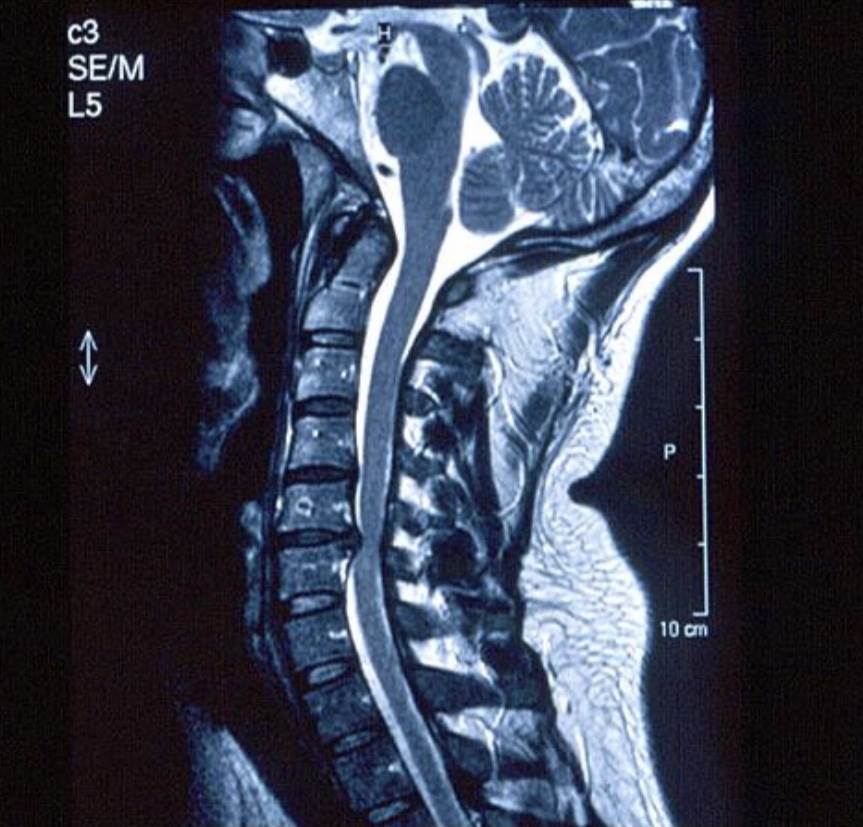Cervical Disk Herniation


Cervical Herniated disks are a common problem resulting from poor posture, being overweight, lifting incorrectly and other factors. This can be a very painful condition, prompting patients to come to me with high hopes for major pain relief.
A herniated disk is a malfunction in the soft, cushioning, jelly-like disks between the vertebrae. These disks absorb the impact between the vertebrae as we move through life, protecting the bones and nerves that run throughout the body from the spinal cord. When they are damaged, they often bulge and burst, and this is often referred to as a herniated or slipped disk.
Signs and Symptoms of Herniated Disks
Signs of a herniated disk can include unexplained arm pain, numbness or tingling, and/or weakness in the arms. Reduced muscle strength, loss of reflexes and ability to walk or the ability to feel light touch, and changes in frequency of elimination of bowel and bladder are also symptoms. Most herniated disks occur in the cervical and lumbar region.
Sometimes there is no pain when one of these disks is damaged and we do not know unless we have an MRI scan (magnetic resonance imaging), CT scan (computerized tomography) or myelogram test done (when a dye is injected into the spinal fluid so that X-rays can map out the structures). In other instances, there can be a great deal of pain associated with a herniated disk as the nerves and bones are compressed with no cushioning.
Causes of Herniated Disks
There are many contributing causes of herniated disks: wear and tear that occurs with aging, excessive body weight, injury to the spine, poor posture or bad habits in exercise or lifting. These disks are designed to protect the spine and spinal column from damage and they themselves can be damaged when the spine is overly compressed or compromised. Often surgery is required to repair the damage, but these disks can sometimes recover by themselves in a few weeks to a few months.
Managing Pain from Herniated Disks
Pain from damaged or herniated disks can range from mild to severe. Managing the pain is similar to managing other soft tissue pain:
• Do not overdo it. If you have a herniated disk, go easy on your body. Do not lift anything heavy and be sure to use proper body mechanics when lifting – bend the knees, lift with your legs – not your back.
• Run hot or cold. Try heat or ice packs for 15-20 minutes at a time.
• Rehabilitation. Consistently do the exercises your doctor or massage therapist gives you to strengthen back and core muscles.
• Stand up straight. Bad posture can lead to a herniated disk and can aggravate an existing one.
• Exercise. Light, regular exercise such as walking will help maintain healthy muscles and circulation to the area.
• Lighten up. Maintaining a healthy body weight takes the load off of these disks, reducing the chances of damage and allowing damaged disks to heal.
• Ask your doctor about medications. There are medications that can help with the pain associated with herniated disks. These can range from over-the-counter analgesics, narcotics, muscle relaxers or cortisone injections. Your doctor will be able to assess an appropriate medication based on your level of pain.
• Massage Therapy! Massage can assist in maintaining healthy muscle tissue in the surrounding area, taking the strain off of the spinal column.
Massage Therapy can Help!
By applying specific soft-tissue modalities to decompress discs along with mobilization techniques to maintain proper joint movements.
Massage therapy treatments can help prevent facet jamming and nerve root impingement. This work can reduce chronic pain patterns and help prevent ongoing disc degeneration by facilitating re-hydration of discs and decreasing muscle spasms. Combined with basic strengthening routines, even pain from a herniated disc can decrease significantly from appropriate massage therapy & soft-tissue treatments.






